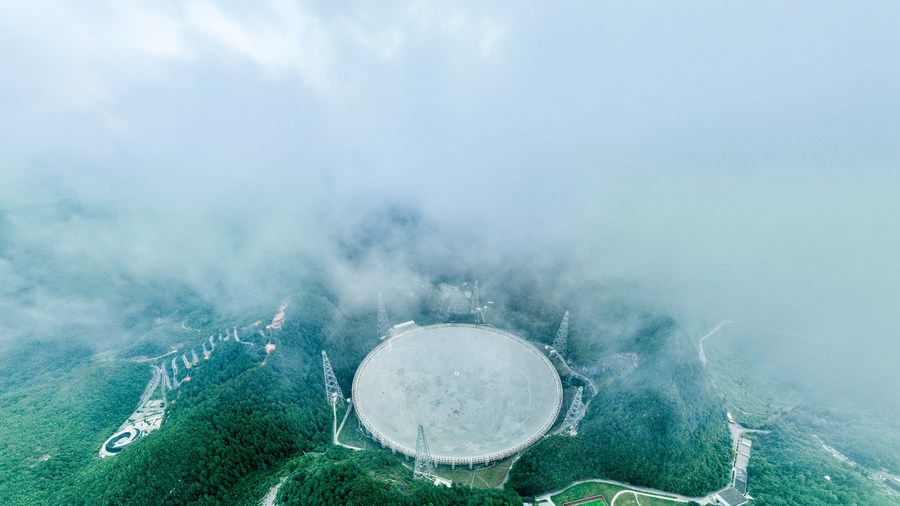Chinese scientists unveil new form of pulses using FAST telescope


BEIJING - Chinese scientists have discovered a new form of pulsar emissions, called dwarf pulses, using the country's Five-hundred-meter Aperture Spherical Radio Telescope (FAST).
The discovery was recently published in the journal Nature Astronomy.
According to the study, pulsars radiate radio signals when they rotate. However, some old pulsars often cease radiating for some periods, a phenomenon called "nulling." The underlying mechanism remains unknown, as the magnetosphere during the nulling state is hard to probe due to the absence of emission measurements.
With the ultra-high sensitivity of the FAST, scientists from the National Astronomical Observatories under the Chinese Academy of Sciences (NAOC), have detected sporadic, weak, narrow pulses in the nulling state of pulsar B2111+46. They named such a new form of pulses as dwarf pulses, which are difficult to be observed by other radio telescopes.
Further analysis shows that the magnetic-field structure in the region radiating the dwarf pulses remains unchanged compared to that for normal pulses. It reveals the physical fact that the magnetospheric structure of a pulsar is essentially unchanged when its radiation is almost extinguished, said Han Jinlin, a leading research scientist in this work at the NAOC.
Whereas radio emission of normal pulses is radiated by a "thunderstorm" of particles in the magnetosphere, dwarf pulses are produced by one or a few "raindrops" of particles, according to this study.
These pulses could help unveil the mysteries of pulsar radiation processes and the extreme plasma conditions within a pulsar's magnetosphere, said Han.
- Mainland scholar discloses fallacies in Lai's separatist narrative on 'unity'
- University's expulsion of female student ignites online debate
- 4,000 hiking enthusiasts hit rugged trails in Chongqing
- Creative fireworks show held in China's 'fireworks capital'
- Chinese scientists achieve net-negative greenhouse gas emissions via electrified catalysis
- At the gateway to China's resistance, memories of war echo 88 years on





































